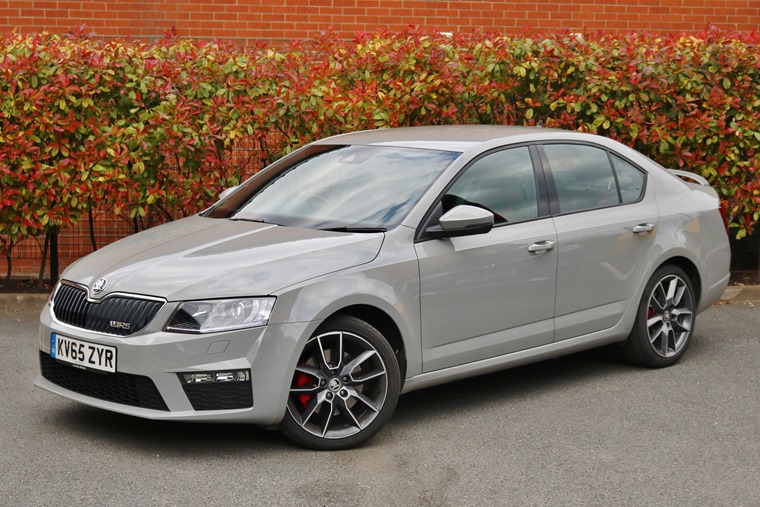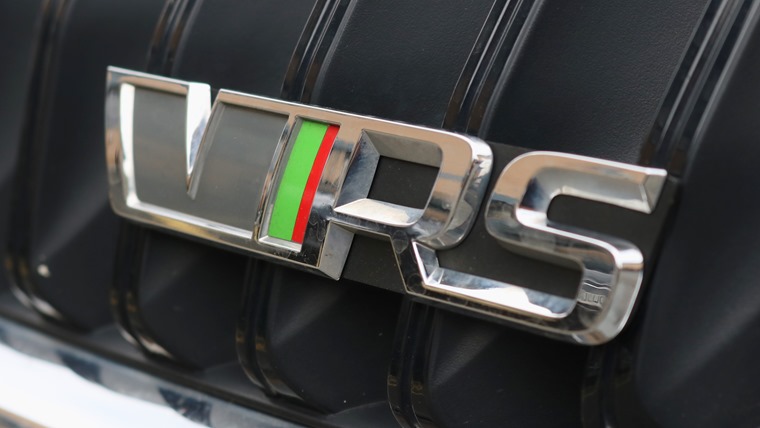Review: Skoda Octavia vRS 4x4 2016
This four-wheel-drive diesel-powered warm hatch is arguably the most versatile car in the Skoda line-up, and we think that makes it the best Skoda you can lease.
We’re big fans of the Skoda Octavia vRS, which showed the world that speed, practicality and even diesel power can all be mixed into one package. Skoda, however, has decided that the vRS breed can be improved with the introduction of four-wheel drive.
We spent some time with the all-paw vRS to find out whether the new drivetrain makes any difference.

See more Skoda Octavia leasing deals here: Business / Personal
Business as usual
At first glance, there’s no hint that this is the all-wheel-drive variant. Yes, there’s a very subtle bodykit and a rear spoiler, but that’s true of all vRS models.
In fact, the only clues you’ll find are the subtle badges dotted around. The bootlid bears the 4x4 legend, but beyond that it’s pretty much business as usual.
Skoda says the Octavia's design was inspired by the crystal glass that the Czech Republic is known for, and you can certainly see some of that in the sharp lines.
That isn’t a problem though, because the Octavia is a good-looking car. Skoda says the design was inspired by the crystal glass that the Czech Republic is known for, and you can certainly see some of that in the sharp lines and deep creases. Skoda may be selling cars on the basis of value and practicality, but it hasn’t stopped investing in design.
Inside it’s a little less enticing, but it’s perfectly functional and very well made. Most of the switchgear has been grabbed straight from the Volkswagen Group parts bin, so the satellite navigation, for example, is exactly the same as the Golf’s, or even the Seat Leon’s.
The only difference is that some of the plastics are slightly cheaper than those found in the Golf, but what do you expect? VW can’t have the Skoda being better than the equivalent Volkswagen.

A lot of car
Despite this, though, the vRS is excellent value. The average three-year personal lease comes in at under £280 per month* for the hatchback variant seen here, and you get an awful lot of car for the money.
Not only do its 4.7m length and 590-litre boot make it larger and more spacious than the Golf with which it shares underpinnings, but it’s very well kitted out as standard.
The six-speed automatic gearbox comes as standard, as does satellite navigation. Climate control, 18in alloys and leather seats are just some of the other features on the spec sheet.
Under the bonnet is the same 2.0-litre diesel you’ll find in the front-wheel-drive vRS – it’s just that the 181bhp it produces is split between the two axles. Actually, that is over-simplifying it; it’s an ‘intelligent’ system that can send the engine’s power to whichever axle has the traction.

The result is a 7.6-second 0-62mph sprint – three tenths faster than the equivalent front-drive vRS – and a 140mph top speed. That isn’t quite up to the standards of petrol-powered hot hatches, but the diesel engine’s robust power delivery makes it plenty of fun. It even sounds good, although only from the cabin, where a false engine note is piped through the speakers when the car is in the ‘vRS’ driving mode.
It’s relatively economical, too, returning 57.6mpg and emitting CO2 at a rate of 129g/km. That’s reasonable compared to the 60.1mpg and 124g/km CO2 achieved by the front-drive car, and it makes sure company car drivers only pay 25% in tax.
The engine is good and the four-wheel-drive system is excellent, but we're less convinced by the gearbox.
So the engine is good, but we’re less convinced by the automatic gearbox, which is a little hesitant when setting off.
The four-wheel-drive system, however, is excellent. The front wheels slip for perhaps a quarter of a turn before the rears take over, catapulting the car down the road. It’s such a fast transfer that you have to be concentrating to notice it, and even then it might be masked slightly by the indecisive auto.
Balanced through the bends
Handling, too, is impressive. The vRS models all get multi-link suspension, progressive electro-mechanical power steering and an electronically controlled locking differential, and that makes it altogether pointier than the standard Octavia. Like all VW Group cars, it’s still slightly too nose-heavy for our taste, but many will love the solid, stable feel of the turn-in.
The four-wheel-drive model, though, supplements all this with a slightly more planted feel on the limit. The electronic system seems not to unsettle the car at all, instead merely resolving to make sure the car feels balanced through the bends.
There is a fair bit of body roll – arguably more than you’d like from a warm hatch – but this is offset by the comparative comfort. As anyone who has driven a Ford Focus ST diesel will testify, hot hatches can be a bit firm on long runs, but the Octavia simply soaks up the bumps in a sporty but not uncomfortable manner.
The verdict
Some might say that four-wheel-drive is pointless in the vRS, but we disagree. With such a torquey diesel engine under the bonnet, the power does ideally need to go to all four corners. Most of the time you won’t notice the difference, but we think the added security makes the vRS 4x4 the most versatile model in the Skoda line-up.
